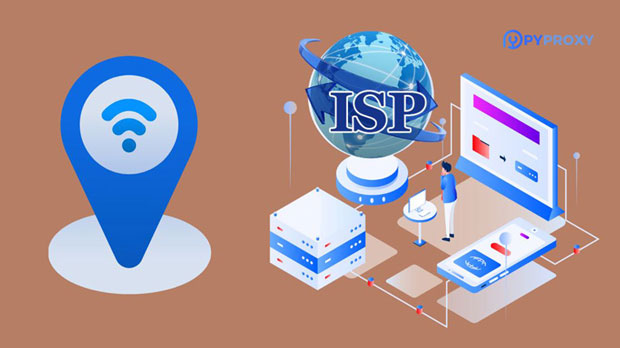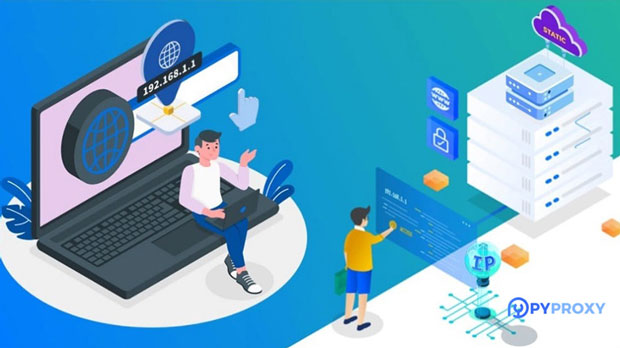How to Improve Network Security with SOCKS5 Proxy?
Network security is an ever-growing concern in today's digital world. One effective way to improve online privacy and protect sensitive data is by using socks5 proxy. SOCKS5, which stands for "Socket Secure" version 5, acts as an intermediary between a user's device and the internet, masking their IP address and encrypting their traffic. This adds an extra layer of protection from various online threats, such as hacking attempts, surveillance, and data theft. In this article, we will explore how to effectively use SOCKS5 proxy to enhance network security, along with its benefits, configuration, and practical use cases. What is SOCKS5 Proxy and How Does it Work?SOCKS5 is a protocol used to route network traffic through an intermediary server, known as a proxy server, to conceal the user’s true IP address. Unlike traditional proxies, SOCKS5 operates at a lower level of the OSI model, allowing it to handle all types of internet traffic, including web browsing, torrents, and other applications.When a user connects to a socks5 proxy server, their internet traffic is sent to the server, which then forwards it to the intended destination. The server replaces the user's IP address with its own, making it difficult for anyone to trace the user's real identity or location. This helps prevent tracking, data interception, and potential cyber threats.One of the key advantages of SOCKS5 over other proxy protocols is its ability to support both TCP and UDP connections, making it more versatile for various applications.Enhancing Privacy with SOCKS5 ProxySOCKS5 proxy significantly enhances online privacy by masking the user's original IP address. This is particularly useful in scenarios where privacy is a priority, such as when browsing sensitive topics, conducting confidential research, or accessing restricted content.With SOCKS5, all incoming and outgoing traffic appears to come from the proxy server’s IP address rather than the user’s. This helps protect users from being tracked by websites, advertisers, and malicious entities that may attempt to gather personal data. It also helps conceal the user's real geographical location, which can prevent targeted attacks based on location.Moreover, SOCKS5 offers a greater level of security compared to its predecessor, SOCKS4, by providing enhanced authentication features. This means that only authorized users can access the proxy server, adding an additional layer of protection against unauthorized access.Securing Internet Traffic with SOCKS5 ProxyOne of the main benefits of using SOCKS5 proxy is its ability to secure internet traffic. By routing all your traffic through a proxy server, SOCKS5 effectively prevents direct connections to your device. This reduces the chances of malicious actors exploiting vulnerabilities in your system or intercepting sensitive data.For example, when using public Wi-Fi networks, which are typically unsecured and a common target for hackers, SOCKS5 provides encryption to protect your internet traffic. Without encryption, hackers can easily intercept data and steal personal information, such as passwords and credit card details. However, with SOCKS5, even if your connection is intercepted, the attacker will not be able to decrypt the data.Furthermore, SOCKS5 can help bypass certain internet restrictions imposed by governments or institutions. It allows users to access websites and online services that may be blocked in certain regions, thereby ensuring freedom of access while maintaining security.SOCKS5 Proxy for Data Encryption and IntegrityData encryption is another critical aspect of network security, and SOCKS5 plays an important role in ensuring that your online communications remain private. socks5 proxies can be combined with other security protocols, such as SSL/TLS, to provide a more comprehensive encryption solution for all data transmissions.This encryption ensures that all traffic between the user and the proxy server is securely transmitted and cannot be easily intercepted by malicious actors. This is particularly beneficial when handling sensitive information, such as online banking, shopping, or accessing confidential business data.Moreover, using SOCKS5 in combination with encryption technologies also helps ensure data integrity, preventing tampering during transmission. This further enhances the reliability and security of online communications.Using SOCKS5 for Safe Browsing and Online ActivitiesSOCKS5 proxies are widely used for safe browsing, especially when accessing websites that may be flagged as suspicious or unsafe. By routing all internet traffic through a SOCKS5 server, users can shield their browsing habits from trackers and malicious entities.Additionally, SOCKS5 is commonly used in online gaming, as it helps bypass geographical restrictions, reduces latency, and secures user connections against DDoS attacks. Gamers often use SOCKS5 to protect their real IP addresses from being exposed to opponents or cybercriminals looking to launch attacks.Moreover, SOCKS5 is a valuable tool for individuals who wish to access content that may be restricted or censored in their country. Whether it’s streaming services, social media platforms, or news outlets, using a SOCKS5 proxy allows users to bypass geo-blocks and maintain a secure, anonymous browsing experience.How to Configure SOCKS5 Proxy for Maximum Security?To take full advantage of SOCKS5 proxy for network security, proper configuration is essential. Most operating systems and applications support SOCKS5, and setting it up involves configuring your device’s network settings to route traffic through the proxy server.Here is a general outline of how to configure SOCKS5 on a computer:1. Obtain SOCKS5 Proxy Details: First, you need to acquire the SOCKS5 proxy server address, port number, and authentication credentials from your provider (if using a paid service).2. Access Proxy Settings: Open your device’s network settings and locate the proxy settings section.3. Enter Proxy Information: Enter the SOCKS5 server address, port number, and any necessary authentication details.4. Enable Proxy for Specific Applications: Many applications, including web browsers and torrent clients, allow users to specify a proxy server for internet connections. Make sure to configure SOCKS5 settings in these applications to ensure secure browsing.5. Test Your Configuration: After setting up SOCKS5, use tools like IP address checkers to verify that your real IP address is masked and that the proxy server is functioning properly.It is also important to ensure that the SOCKS5 proxy server you use is reliable and trustworthy. Security is only as strong as the proxy server itself, so it is essential to select a service that prioritizes user privacy and data protection.Conclusion: Maximizing Network Security with SOCKS5 ProxyIn conclusion, SOCKS5 proxy is an excellent tool for enhancing network security and privacy. By masking the user's IP address, encrypting traffic, and ensuring data integrity, SOCKS5 protects against hacking attempts, surveillance, and unauthorized access to sensitive information. Whether for personal use, secure browsing, or accessing restricted content, SOCKS5 offers valuable benefits that help safeguard your online activities.Proper configuration and use of SOCKS5 proxy can significantly improve your network security, especially when paired with other encryption and authentication protocols. As cyber threats continue to evolve, using SOCKS5 is a proactive way to ensure your online presence remains private and protected from various digital risks.
2025-01-30

























































